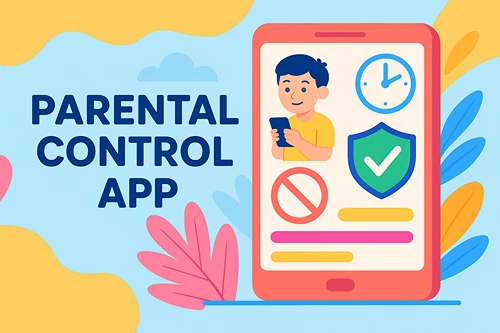Creating a Child-Friendly Digital Experience: Essential Safety and Security Tips for Parents
As a fundamental part of communication, education, and entertainment, the Internet is essentially unavoidable in modern life. One way or the other, our children are going to start engaging with it at some point, and that will expose them to a variety of potential online risks.
As parents, it’s our job to mitigate these risks and make sure that they remain safe and secure when they begin their digital journeys. In this piece, we’ll discuss some key steps we can take to do exactly that and ensure that our kids have the best possible introduction to the online world.
Make use of parental controls and filters
First and foremost, consider using parental control settings and content filters, especially in the case of younger children. This will give you a way to restrict access to potentially harmful websites, preventing your kids from unintentionally putting themselves at risk. Nowadays, all of the most popular web browsers have options to restrict access to certain sites, and internet service providers also offer features for customizing your connection and blocking content that you don’t want your children running across. Setting safe search engines as the default on your household devices will also help filter out potentially inappropriate or unsafe search results to ensure safe and secure browsing.
Additionally, it may be worth installing RMM (Remote monitoring and management) software on your devices. This type of application is commonly used by companies managing remote employees, but it can be equally useful for parents who want to keep an eye on their children’s device usage and habits.
Prioritize password management
Despite all of the developments and advancements in cybersecurity, weak passwords remain one of the biggest risks, so it’s important to take an active role in ensuring good password management for any online accounts your kids are using. Ensure that they are using strong passwords that are difficult to guess and contain a combination of letters, numbers, and special characters. Additionally, it’s also a good idea to have them change their passwords regularly. Using a password manager application can help with this by generating strong passwords for all accounts and storing them in a single secure location.
Keep devices and software updated
Threat actors are increasingly exploiting software vulnerabilities to carry out attacks on unsuspecting parties, so outdated applications and systems represent a growing cybersecurity risk. To ensure that your children aren’t exposed to this kind of risk, you’ll want to keep your devices’ operating systems and installed apps up to date. Providers regularly release new software updates for their products which patch out exploitable vulnerabilities, but keeping up with them isn’t always so easy. By using one of the best patch management software applications available, however, you can automate the update process. This will make sure that the operating systems and applications your kids use are always as secure as possible.
Set up VPNs on your devices
Virtual Private Networks (VPNs) have become extremely popular in recent years, and for good reason. They make a huge difference to online privacy and security, and it’s well worth installing one on all of your devices. VPNs are applications that divert your device’s internet connection, concealing your IP address. This makes it much more difficult for anyone to track your device online. What’s more, they encrypt all data traffic coming from your device, ensuring that it cannot be intercepted and exploited, even when your child is using the device on an open public network, such as at a library, mall, or café.
Modern VPN applications are extremely easy to install, often very cheap or even free, and can usually be activated with a single click. By setting one up on each of your devices and ensuring it’s activated whenever your child goes online, you can add an additional layer of security and privacy for greater peace of mind.
Educate your kids about risks and promote good habits
While it’s highly beneficial to put safeguards in place to help make your child’s digital experience more secure, it’s always advisable to promote an awareness of risks and encourage safe browsing. Assuming they’re old enough, you can take the time to read up on common online risks with your child and teach them how to identify and avoid common threats like phishing and malware. Additionally, kids should be educated on safe habits, such as not sharing personal information online or opening messages from unknown senders. This will help them navigate the digital realm more safely.
If you have a child who is an avid user of social media or online gaming platforms, it’s also useful to teach them healthy habits for their personal well-being. Encourage them to set screen time limits to promote balance between online and offline hobbies, and teach the importance of healthy online interactions and respect in digital spaces. For older children using social media, in particular, it’s also advisable to teach them about fact-checking information that they see online. All of this will help your children to have a safer, healthier, and more enjoyable online experience.
Final thoughts
The Internet can be an unpredictable place in many ways, so it is up to us to take control and put measures in place to establish a safe and secure experience for our children. By taking the steps we’ve outlined above and using the right IT management tools on both PC and mobile, you can do just that and ensure that your kids can enjoy all of the benefits of benefits of the Internet without compromising on safety orwell-beingg.






